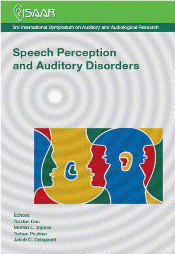The effects of acute and chronic stress on auditory function: Experimental and clinical studies
Abstract
The deleterious effects of mechanical stress (i.e. noise) on hearing have been studied extensively in both animal models (Ohlemiller, 2008) and human populations (Tambs et al., 2003) but the notion of emotional stress as a modulator of the auditory system is rather novel. A complex set of pathways of the stress response have been identified, involving both sympathetic stimulation of adrenergic α-receptors within the cochlea (Bielefeld and Henderson, 2006), as well as neuro-endocrine responses primarily aimed at engaging the hypothalamic-pituitary-adrenal (HPA) axis. Current research suggests that acute stress may protect the cochlea (Tahera et al., 2006, 2007), whereas chronic stress exposure seems to be harmful to hearing. The importance of a normal functioning of the stress response for healthy hearing is supported by clinical studies showing that patients with tinnitus display signs of an impaired stress response along with a higher degree of perceived stress, compared to nontinnitus patients (Hebert and Lupien 2007, 2009). In this review we discuss how acute or chronic stress can modulate the auditory system. Our results cover a range of experimental studies as well as several clinical studies and will be presented separately.References
Bielefeld, E. C., and Henderson, D. (2007). “Influence of sympathetic fibers on noise-induced hearing loss in the chinchilla” Hear. Res. 223 (1-2), 11–19.
Canlon, B., Erichsen, S., Nemlander, E., Chen, M., Hossain, A., Celsi, G., and Ceccatelli, S. (2003). “Alterations in the intrauterine environment by glucocorticoids modifies the developmental programme of the auditory system” Eur. J. Neurosci. 17, 2035–2041.
Davis, A. C. (1989). “The prevalence of hearing impairment and reported hearing disability among adults in Great Britain” Int. J. Epidemiol. 18 (4), 911–917.
Fredelius, L., and Rask-Andersen, H. (1990). “The role of macrophages in the disposal of degeneration products within the organ of corti after acoustic overstimulation” Acta Otolaryngol. 109, 76–82.
Gloddek, B., Lamm, K., and Arnold, W. (2002). “Pharmacological influence on inner ear endothelial cells in relation to the pathogenesis of sensorineural hearing loss” Adv. Otorhinolaryngol. 59, 75–83.
Hasson, D., Theorell, T., Wallén, M. B., Leineweber, C., and Canlon, B. (2011). “Stress and prevalence of hearing problems in the Swedish working population” BMC Public Health, 11, 130-136.
Hebert, S, and Lupien, S. J. (2007). “The sound of stress: blunted cortisol reactivity to psychosocial stress in tinnitus sufferers” Neurosci. Lett. 411 (2), 138–142.
Hebert, S. and Lupien, S. J. (2009). “Salivary cortisol levels, subjective stress, and tinnitus intensity in tinnitus sufferers during noise exposure in the laboratory” Int. J. Hyg. Environ. Health. 212 (1), 37–44.
Herman J. P., and Cullinan, W. E. (1997). “Neurocircuitry of stress: central control of the hypothalamo-pituitary-adrenocortical axis” Trends Neurosci. 20, 78–84.
Hossain, A., Hajman, K., Charitidi, K., Erhardt, S., Zimmermann, U.,
Knipper, M., and Canlon, B. (2008). “Prenatal dexamethasone impairs behavior and the activation of the BDNF exon IV promoter in the paraventricular nucleus in adult offspring” Endocrinology 149, 6356–6365.
Maeda, K., Yoshida, K., Ichimiya, I. and Suzuki, M (2005). “Dexamethasone inhibits tumor necrosis factor-alpha-induced cytokine secretion from spiral ligament fibrocytes” Hear. Res. 202, 154–160.
Magnusson Hanson, L. L., Theorell, T., Oxenstierna, G., Hyde, M., and Westerlund, H. (2008). “Demand, control and social climate as predictors of emotional exhaustion symptoms in working Swedish men and women” Scand. J. Public Health 36 (7), 737–743.
Maslach, C., Jackson, S. E., and Leiter, M. P. (1996). Maslach burnout inventory manual. 3. Palo Alto, Ca.: Consulting Psychologists Press.
Meltser I, Tahera, Y. and Canlon, B. (2009). “Glucocorticoid receptor and mitogenactivated protein kinase activity after restraint stress and acoustic trauma” J. Neurotrauma 26, 1835–1845.
Downloads
Published
How to Cite
Issue
Section
License
Authors who publish with this journal agree to the following terms:
a. Authors retain copyright* and grant the journal right of first publication with the work simultaneously licensed under a Creative Commons Attribution License that allows others to share the work with an acknowledgement of the work's authorship and initial publication in this journal.
b. Authors are able to enter into separate, additional contractual arrangements for the non-exclusive distribution of the journal's published version of the work (e.g., post it to an institutional repository or publish it in a book), with an acknowledgement of its initial publication in this journal.
c. Authors are permitted and encouraged to post their work online (e.g., in institutional repositories or on their website) prior to and during the submission process, as it can lead to productive exchanges, as well as earlier and greater citation of published work (See The Effect of Open Access).
*From the 2017 issue onward. The Danavox Jubilee Foundation owns the copyright of all articles published in the 1969-2015 issues. However, authors are still allowed to share the work with an acknowledgement of the work's authorship and initial publication in this journal.


